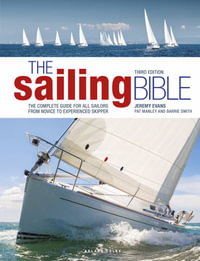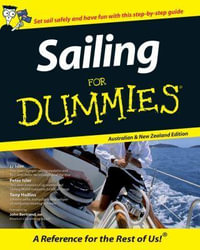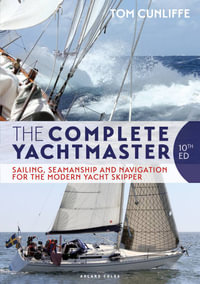1. MOTIVATION
2. ESCAPING THE RAT RACE
2.1 How to make it happen
2.2 How to excite your partner for the cruising life
2.3 Bring your family - sailing with kids
2.4 Cost of the cruising life style
2.4.1 Monthly expenses
2.4.2 Ways to finance cruising
2.4.3 The secret of saving
3. THE SEARCH FOR THE PERFECT BOAT
3.1 Selecting the right size
3.2 Hull materials of choice
3.3 Traditional offshore and modern cruising boats
3.4 Costs of your new boat
3.5 Narrowing down the search
3.6 Making an offer
3.7 The survey, a step not to be omitted
3.8 Alternative rides - sailing as a crew
4. GAINING AND IMPROVING SAILING SKILLS
5. PREPARING AND OUTFITTING A CRUISING BOAT
5.1 The hull
5.2 Rigging and Sails
5.3 Anchor and Rode
5.4 The electrical system simplified
5.4.1 How much energy do we need - the energy budget
5.4.2 Fighting the resistance
5.4.3 Producing electricity - Solar and Wind
5.4.4 Batteries
5.5 Self steering - autopilots, wind vanes, and alternatives
5.5.1 Electronic Autopilots
5.5.2 Wind vane self-steering
5.6 The engine - inboard diesel and alternatives
5.6.1 Engine spares and maintenance
5.6.2 Alternative propulsion systems.
5.7 Navigation - chart plotter, apps, laptops and paper charts
5.7.1 Integrated GPS/radar/sonar chart plotter systems
5.7.2 Navigation apps.
5.7.3 Laptop based navigation
5.7.4 Utilizing Google Earth charts
5.7.5 Good old paper charts.
5.7.6 Old School - navigating by celestial bodies
5.7.7 Cruising guides
5.8 X-ray vision - what radar can do for you
5.8.1 Radar Reflectors - how to be seen
5.9 AIS - collision avoidance at sea
5.10 Communication - VHF, SSB, sat and cell phones
5.10.1 Marine VHF - the short range workhorse
5.10.2 Cell phones
5.10.3 Internet access - cell phone, dongle, WiFi
5.10.4 Satellite phones - call and data
5.10.5 Marine SSB, ham, free weather and email
5.11 Freshwater onboard – store, catch or make it
5.11.1 Watermakers – becoming freshwater independent
5.12 Fridge, freezer and alternatives
5.13 The dinghy - your car on the water
5.14 Ventilation
5.15 How much equipment do you really need?
6. USEFUL CRUISING SKILLS
6.1 Setting the hook - anchoring techniques
6.2 Navigating atolls and coral infested waters
6.2.1 Entering an atoll
6.2.2 Navigating safely in coral invested waters
6.3 Downwind Sailing
6.4 Balancing sails and alternative self-steering
6.5 Aids to navigation for the long distance cruiser
6.6 Staying up to date on the weather
6.6.1 Weather basics in a nutshell
6.6.2 Where to obtain weather info
7. SAFETY AND HEALTH AT SEA
7.1 Seasickness - when the motion of the ocean causes troubles
7.2 Staying on board - Jacklines, Harnesses, MOB alerts & PLBs
8. DEALING WITH FOUL WEATHER
8.1 The basics - what capsizes a boat
8.2 Storm tactics
8.3 Emergency and distress
8.3.1 Distress signals, flares, and LED technology
8.3.2 EPIRB - calling for help
8.3.2 worst case scenario - abandoning ship
9. MAKING THE CRUISING DREAM A REALITY
9.1 Moving onto the boat
9.1.2 Pets ...
























